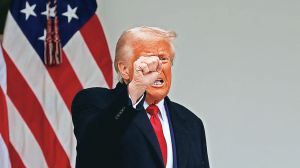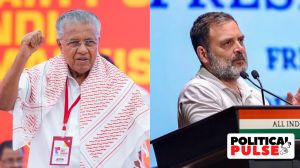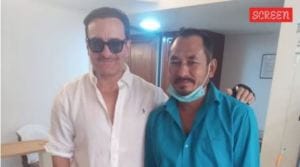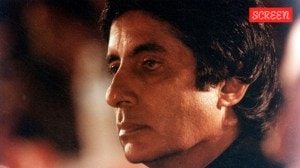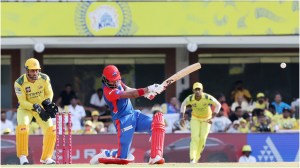World’s largest ‘exporter’ of adopted children: Revelations from South Korea’s fact-finding commission
Over 200,000 children from South Korea have been adopted worldwide after the end of the Korean War. Here is why allegations of fraud have been made against the larger process.
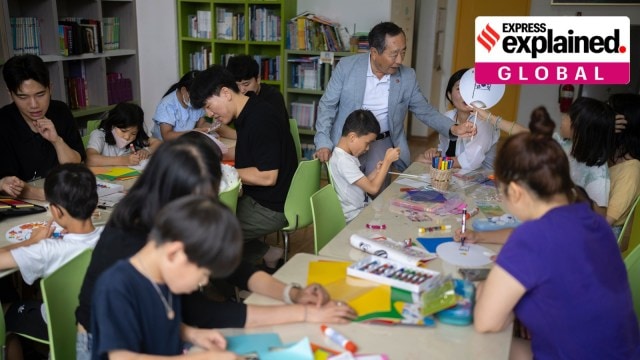 South Korean adoptees have been returning to the country to hold the government accountable for what they call a corrupt and predatory adoption system. (Chang W. Lee/The New York Times)
South Korean adoptees have been returning to the country to hold the government accountable for what they call a corrupt and predatory adoption system. (Chang W. Lee/The New York Times)Earlier this week, a Truth and Reconciliation Commission in South Korea released its findings, lending weight to long-standing allegations of corruption and negligence in the country’s overseas adoption program.
More than 360 petitions were filed by people adopted between 1964 and 1999. In the first 100 cases addressed in the findings, 56 people were identified as victims of human rights violations and government negligence. The investigation began in 2022 and is slated to end in May.
It marks the state’s first official admission of such problems and the commission has recommended that the government apologise for violating adoptees’ rights.
What the Truth Commission report found
Over 200,000 children were adopted from Korea between the end of the Korean War (1950-53) and the present day. Many adoptees have since attempted to trace their roots, while some have accused their adoptive families of abuse.
The commission detailed the mass ‘exportation’ of children to meet foreign demand. “For nearly 50 years following the Korean War, the government prioritised intercountry adoption as a cost-effective alternative to strengthening domestic child welfare policies,” the commission said. Here are its key findings:
- 01
Oversight issues
There was a “systematic failure in oversight and management” after the country’s transnational adoption program was delegated to private agencies, which enjoyed significant privileges under the law.
- 02
Foreign Agencies' demands
South Korean agencies have been accused of “facilitating large-scale intercountry adoptions with minimal procedural oversight” to meet the demands of foreign agencies.
- 03
Falsified information
Agencies falsified records to indicate that children had been abandoned and put up for adoption or to send children different from the ones listed because they died. Cases where the birth mothers had been coerced into surrendering their children were noted.
- 04
Screening concerns
In some cases, adoptive parents were not thoroughly screened or were forced to pay to be allowed to adopt a child.
In addition to the apology, the commission has recommended that the government conduct a comprehensive survey of adoptees’ citizenship status and identify remedies for victims whose identities were falsified.
According to the Associated Press, some adoptees and even a commission investigator criticised the “cautiously written” report, saying there was a case for more strongly establishing the government’s complicity.
What might have enabled such adoptions?
The large-scale ‘export’ of Korean adoptees in the West traces a complex history of a war-torn nation that sought to get back on its feet amid domestic political turmoil.
Undivided Korea was a traditional patriarchal society which took pride in maintaining feudal hierarchies and assigned social roles. Concepts of filial piety, which emphasised the respect of elders by younger generations, and a male head of the household have been central to Korean society. Maintaining bloodlines was considered important, and so adoptions were limited to rehousing relatives or people who shared the same surname (“A Country Divided: Contextualizing Adoption from a Korean Perspective”, Dong Soo Kim, 2013).
The Korean War marked a turning point. It saw the Korean peninsula divided into two countries – the Democratic People’s Republic of Korea (DPRK) in the north and the Republic of Korea in the south. Under a United Nations sanction, 17 countries (including the US) fought for South Korea, while China and Russia aided North Korea.
Role of social norms, relationship with Western powers
The war left behind around 200,000 widows and 100,000 orphans. Given the prevalent social norms, biracial children born to Korean women and American servicemen “were ostracised in the ‘pure blood’ monoethnic society,” according to Kim.
An international outpouring of sympathy would spur the first wave of adoption from South Korea in 1954 as scores of orphaned children were placed in crowded orphanages. A major impetus was the “growing problem of unwanted, mixed racial children of U.S. military servicemen in the 1950s”, which expanded the scope of the adoption program. (“Goal displacement and dependency in South Korean-United States intercountry adoption“, RC Sarri, Yenoak Baik & Marti Bombyk, 1998)
In her book Adopted Territory: Transnational Korean Adoptees and the Politics of Belonging, Eleana J Kim wrote that the first documented American civilian adoption of a Korean War baby was recorded in 1953. A year later, the Child Placement Service became the first South Korean government-approved adoption agency dealing exclusively with overseas adoptions.
For the US, today the largest recipient of adoptees from Korea, this opportunity presented a reversal in its long-standing policy. It banned Asian immigration and placed quotas on all immigration in its 1924 Immigration Act. After the Korean War, it sought to reposition itself as a benevolent world leader that undertook humanitarian efforts to aid South Korea and rescue orphaned children, with anti-communist Cold War messaging.
The 1953 Refugee Relief Act was a step in this direction, primarily intended to shelter refugees from communist Eastern European countries. However, following lobbying by the Holts, an Oregon-based Christian Evangelical farming couple who wished to adopt Korean children, Congress would pass the Bill for Relief of Certain War Orphans. Harry Holt and his wife Bertha Holt, already parents of six, thus adopted eight Korean children in 1955.
The Holts became household names in South Korea after creating the Holt Adoption Agency, now Holt International, which became a key player in the transnational placement program.
In 1961, South Korea formalised the adoption process by passing the Extraordinary Law of Adoption for the Orphan Child (ELAO), explicitly designed to encourage foreigners to adopt Korean children. The US also passed the Immigration and Nationality Act, 1961 (INA), abolishing the quotas on national origins and establishing a system of preference based on skills and family ties.
The INA recognised an orphan as a child under 16 years whose parents were deceased, had abandoned them, or had voluntarily surrendered their parental rights. This definition made more children eligible for adoption.
A systematic, hassle-free adoption process was thus created, leading to increased adoptions from South Korea into the US over the following years. An enabling factor was the authoritarian regime in South Korea – under Syngman Rhee from 1948 until 1960 and Park Chung Hee from 1961 to 1979. The country followed an aggressive path to economic development, which saw it lift itself out of poverty and achieve rapid economic progress mere decades after the war.
The uptick in adoptions in the 1970s was also informed by changing social structures in the US – a decline in birth and fertility rates in the US, legalisation of abortion following the Roe v. Wade judgement and access to birth control, as well as an increase in single mothers. (“Issues in supply and demand in adoption”, Thomas Nutt, 1974)
Following domestic criticism of “child exports”, South Korea in 1976 sought to limit the extent of foreign adoptions by 20% annually. However, this measure was short-lived, and the country would see its highest number of international adoptions in 1985-86, when over 8,800 children were sent abroad. This prompted a wave of backlash globally and forced the government to restrict foreign adoptions altogether, pushing for domestic adoptions instead.
The country’s transition to democracy may have aided this effort – while the goal of restricting international adoptions to 2,000 a year was largely unsuccessful, domestic adoptions have increased over the years.
More Explained
Must Read
EXPRESS OPINION
Apr 05: Latest News
- 01
- 02
- 03
- 04
- 05






